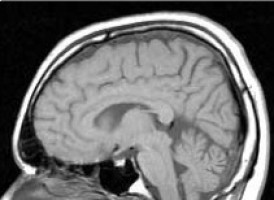
A University of Portsmouth academic has helped to develop European guidelines to treat brain tumours more effectively.
Geoff Pilkington, Professor of Cellular and Molecular Neuro-oncology and one of the UK's leading brain tumour specialists, was one of only three UK academics who devised the European Association for Neuro-Oncology (EANO) guidelines on the diagnosis and treatment of adult patients with astrocytic and oligodendroglial gliomas, including glioblastomas.
The guidelines provide guidance for diagnostic and management decisions, while limiting unnecessary treatments and costs.
They are a resource for professionals involved in the management of patients with glioma, for patients and caregivers and for health-care providers in Europe.
The recommendations discuss prevention, early diagnosis and screening, histological and molecular diagnostics, therapy and follow-up.
The authors have also integrated the results from recent clinical trials that have changed clinical practise.
Professor Pilkington, Head of the Brain Tumour Research Centre at the University of Portsmouth, said: "The implementation of this guideline requires multidisciplinary structures of care and defined processes of diagnosis and treatment. It focuses on pathological and radiological diagnostics and the main treatment methods of surgery, radiotherapy and pharmacotherapy.
"For example, the use of prognostic and diagnostic markers such as IDH mutations and MGMT methylation status, may aid in improved therapeutic planning with high grade malignancies."
The guidelines are based on the May 2016 WHO classification of tumours of the central nervous system and on scientific developments since the 2014 guideline.
Professor Pilkington added: "The new guidelines are timely, coming in the wake of the revised WHO classification of tumours of the central nervous system which adds molecular profiling to classical histopathological pattern recognition in order to potentially stratify individual sub-groups of patients to receive more personalised therapies. This, we hope, will lead to improved survival times and improved quality of life, post treatment."
Source: University of Portsmouth
The World Cancer Declaration recognises that to make major reductions in premature deaths, innovative education and training opportunities for healthcare workers in all disciplines of cancer control need to improve significantly.
ecancer plays a critical part in improving access to education for medical professionals.
Every day we help doctors, nurses, patients and their advocates to further their knowledge and improve the quality of care. Please make a donation to support our ongoing work.
Thank you for your support.